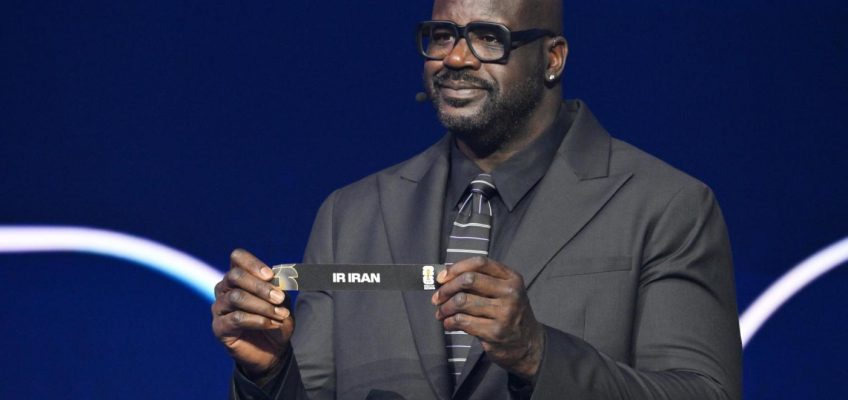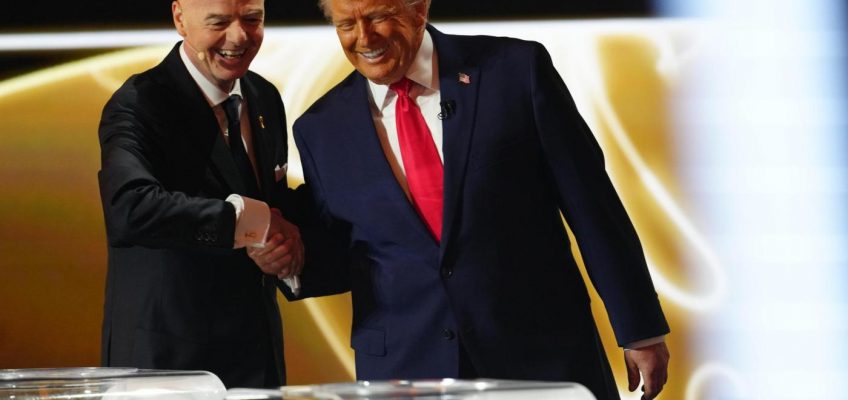By STEPHEN GROVES and LISA MASCARO
WASHINGTON (AP) — The U.S. military opened fire on two people clinging to the wreckage of a boat allegedly carrying drugs, congressional lawmakers learned this week as they seek more answers about the attack and the legal underpinnings of President Donald Trump’s military campaign in international waters near Venezuela.
The Sept. 2 strikes on an alleged drug boat were the first foray by the U.S. military into blowing up vessels allegedly carrying drugs. But this particular attack and the broader military campaign, which so far has destroyed more than 20 boats and killed more than 80 people, is now under intense scrutiny. Lawmakers who oversee national security committees heard this past week from the Navy admiral who ordered the initial strikes, including the follow-up that killed the two survivors.
While Adm. Frank “Mitch” Bradley stated clearly that Defense Secretary Pete Hegseth did not issue a “kill them all” order on the survivors, Democratic lawmakers say the scope of the mission was clear — to destroy the drugs and kill the 11 people on board. The lawmakers and military experts say the sequence of events is alarming, potentially violating the laws of armed conflict that safeguard human rights and protect American troops.
What lawmakers learn in the weeks ahead, and how far they are willing to press the administration for answers, presents a defining moment for the U.S. military under Trump’s second-term command. It is testing the scope of laws that have long governed soldiers on the battlefield and will almost certainly influence the course of the tense standoff between Trump’s White House and the government of Venezuela.
Here’s what’s known about the boat strikes and what other information lawmakers are still pursuing.
Sen. Tom Cotton, R-Ark., speaks to reporters following a classified briefing for top congressional lawmakers overseeing national security as they investigate how Defense Secretary Pete Hegseth handled a military strike on a suspected drug smuggling boat and its crew in the Caribbean near Venezuela Sept. 2, at the Capitol in Washington, Thursday, Dec. 4, 2025. (AP Photo/Kevin Wolf)
What lawmakers have learned
Bradley told lawmakers that he ordered a second attack on the wreckage of a boat that was carrying cocaine because it was believed that bales of the drug were still in the hull of the boat, according to a person with knowledge of the briefing who spoke on the condition of anonymity because they were not authorized to discuss it.
For several minutes, two people, shirtless and at one point waving, had climbed on the piece of the boat that was still floating.
They were “drifting in the water — until the missiles come and kill them,” said Rep. Adam Smith, the ranking Democrat on the House Armed Services Committee, adding that their slaying was “deeply concerning.”
However, Sen. Tom Cotton, the Republican chair of the Senate Intelligence Committee, said he believed the video shows the two people trying to flip over the piece of the boat. For him, that was enough of an indication that the survivors were trying to “stay in the fight” and were therefore still justifiable targets.
Bradley told the lawmakers that the rationale for the second strike was to ensure that the cocaine in the boat could not be picked up later by cartel members. Lawmakers previously had been told the second strike was ordered to sink the boat.
The rationale grows out of the legal opinion that the Department of Defense is using as the entire basis for its military operation against drug cartels, especially because Congress has not explicitly authorized the Trump administration to conduct the campaign.
Under the Trump administration’s legal opinion, drugs and drug smugglers en route to the U.S. are essentially viewed as terrorist threats and can be targeted with the same rules that apply to the global war on terror.
That’s a dramatic shift from traditional practice that views drug running as a serious criminal crime, but one to be handled typically by law enforcement, usually the Department of Homeland Security’s Coast Guard, rather than the military.
Democrats say the conclusions of the Trump administration’s legal argument are troublesome. “That incredibly broad definition, I think, is what sets in motion all of these problems about using lethal force and using the military,” Smith said.
That’s led lawmakers to call for the public release of the legal argument that undergirds the military campaign, a roughly 40-page opinion from the Justice Department’s Office of Legal Counsel.
“This briefing confirmed my worst fears about the nature of the Trump administration’s military activities,” Sen. Jack Reed, the top Democrat on the Armed Services committee, said in a statement. “This must and will be the only beginning of our investigation into this incident.”
Rep. Adam Smith, D-Wash., the ranking member of the House Armed Services Committee, leaves after meeting with Adm. Frank “Mitch” Bradley, commander of the U.S. Special Operations Command, and Gen. Dan Caine, chairman of the Joint Chiefs of Staff, at a classified briefing at the Capitol in Washington, Thursday, Dec. 4, 2025. (AP Photo/J. Scott Applewhite)
What lawmakers are trying to find out
The Office of Legal Counsel’s opinion, which has been classified by the Trump administration and was only made available to lawmakers in November, was signed on Sept. 5, according to lawmakers who have reviewed it. The attack in question, however, was conducted three days before, on Sept. 2.
Lawmakers want to know under what orders and instructions the operation was conducted.
Federal judge appears skeptical of Trump’s ongoing command of California National Guard troops
FACT FOCUS: Trump said weaker gas mileage rules will mean cheaper cars. Experts say don’t bet on it
The Supreme Court will decide whether Trump’s birthright citizenship order violates the Constitution
Indiana House Republicans pass Trump-backed map, setting up high-stakes Senate fight
Trump meets Mexican President Sheinbaum in person for the first time at World Cup draw
Bradley told lawmakers this week that he had not personally read through the entire legal opinion, according to the person with knowledge of the briefing. And while Hegseth has said that military lawyers, known as judge advocate generals or JAGs, were kept in the loop on the operation, lawmakers found out Thursday that the JAGs for special operations command and southern command, the two command posts for the operation, did not have access to the legal opinion until mid-November.
Bradley also told lawmakers that the orders did not contain a directive to kill all the boat occupants, and Cotton pointed out that the military was still operating under the same orders when it picked up the survivors of a later, separate attack.
Lawmakers on the armed services committees are requesting the written execute order for the operation, which would include the rules of engagement that soldiers were expected to follow. Democratic lawmakers also want to understand what Hegseth communicated verbally to military officials, either by reviewing a transcript of his remarks or interviewing those involved.
The armed services committees also want to hear from Navy Adm. Alvin Holsey, who is retiring as the commander of U.S. forces in Central and South America. He had been commanding the overall campaign, but Hegseth announced last month that Holsey would be retiring early.
Lawmakers also want to find out why Hegseth was not in the operation room when the second strike was carried out. He has said he stepped out for other business after the first strike.
So far, Hegseth has been defiant in the face of criticism from Capitol Hill. Just after the briefings concluded Thursday, the military announced that it had struck another boat that it believed was carrying drugs, killing four people. That latest strike, the 22nd of the campaign, brought the death toll to at least 87 people.




